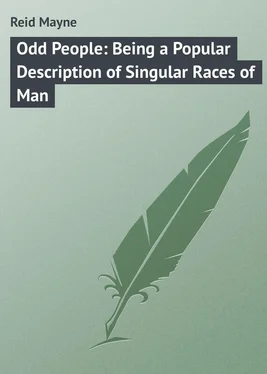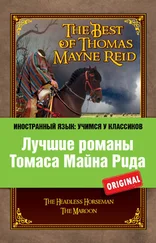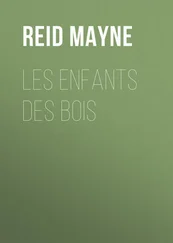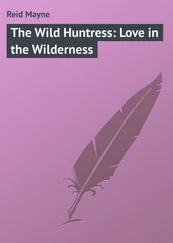Mayne Reid - Odd People - Being a Popular Description of Singular Races of Man
Здесь есть возможность читать онлайн «Mayne Reid - Odd People - Being a Popular Description of Singular Races of Man» — ознакомительный отрывок электронной книги совершенно бесплатно, а после прочтения отрывка купить полную версию. В некоторых случаях можно слушать аудио, скачать через торрент в формате fb2 и присутствует краткое содержание. Жанр: foreign_prose, на английском языке. Описание произведения, (предисловие) а так же отзывы посетителей доступны на портале библиотеки ЛибКат.
- Название:Odd People: Being a Popular Description of Singular Races of Man
- Автор:
- Жанр:
- Год:неизвестен
- ISBN:нет данных
- Рейтинг книги:4 / 5. Голосов: 1
-
Избранное:Добавить в избранное
- Отзывы:
-
Ваша оценка:
- 80
- 1
- 2
- 3
- 4
- 5
Odd People: Being a Popular Description of Singular Races of Man: краткое содержание, описание и аннотация
Предлагаем к чтению аннотацию, описание, краткое содержание или предисловие (зависит от того, что написал сам автор книги «Odd People: Being a Popular Description of Singular Races of Man»). Если вы не нашли необходимую информацию о книге — напишите в комментариях, мы постараемся отыскать её.
Odd People: Being a Popular Description of Singular Races of Man — читать онлайн ознакомительный отрывок
Ниже представлен текст книги, разбитый по страницам. Система сохранения места последней прочитанной страницы, позволяет с удобством читать онлайн бесплатно книгу «Odd People: Being a Popular Description of Singular Races of Man», без необходимости каждый раз заново искать на чём Вы остановились. Поставьте закладку, и сможете в любой момент перейти на страницу, на которой закончили чтение.
Интервал:
Закладка:
In truth, the Esquimaux are by no means the savages they have been represented. The only important point in which they at all assimilate to the purely savage state is in the filthiness of their persons, and perhaps also in the fact of their eating much of their food (fish and flesh-meat) in a raw state. For the latter habit, however, they are partially indebted to the circumstances in which they are placed – fires or cookery being at times altogether impossible. They are not the only people who have been forced to eat raw flesh; and Europeans who have travelled in that inhospitable country soon get used to the practice, at the same time getting quite cured of their dégoût for it.
It is certainly not correct to characterise the Esquimaux as mere savages . On the contrary, they may be regarded as a civilised people, that is, so far as civilisation is permitted by the rigorous climate in which they live; and it would be safe to affirm that a colony of the most polished people in Europe, established as the Esquimaux are, and left solely to their own resources, would in a single generation exhibit a civilisation not one degree higher than that now met with among the Esquimaux. Indeed, the fact is already established: the Danish and Norwegian colonists of West Greenland, though backed by constant intercourse with their mother-land, are but little more civilised than the “Skellings,” who are their neighbours.
In reality, the Esquimaux have made the most of the circumstances in which they are placed, and continue to do so. Among them agriculture is impossible, else they would long since have taken to it. So too is commerce; and as to manufactures, it is doubtful whether Europeans could excel them under like circumstances. Whatever raw material their country produces, is by them both strongly and neatly fabricated, as indicated by the surprising skill with which they make their dresses, their boats, their implements for hunting and fishing; and in these accomplishments – the only ones practicable under their hyperborean heaven – they are perfect adepts. In such arts civilised Europeans are perfect simpletons to them, and the theories of fireside speculators, so lately promulgated in our newspapers, that Sir John Franklin and his crew could not fail to procure a living where the simple Esquimaux were able to make a home, betrayed only ignorance of the condition of these people. In truth, white men would starve, where the Esquimaux could live in luxurious abundance, so far superior to ours is their knowledge both of fishing and the chase. It is a well-recorded fact, that while our Arctic voyagers, at their winter stations, provided with good guns, nets, and every appliance, could but rarely kill a reindeer or capture a seal, the Esquimaux obtained both in abundance, and apparently without an effort; and we shall presently note the causes of their superiority in this respect.
The very dress of the Esquimaux is a proof of their superiority over other savages. At no season of the year do they go either naked, or even “ragged.” They have their changes to suit the seasons, – their summer dress, and one of a warmer kind for winter. Both are made in a most complicated manner; and the preparation of the material, as well as the manner by which it is put together, prove the Esquimaux women – for they are alike the tailors and dressmakers – to be among the best seamstresses in the world.
Captain Lyon, one of the most observant of Arctic voyagers, has given a description of the costume of the Esquimaux of Savage Island, and those of Repulse Bay, where he wintered, and his account is so graphic and minute in details, that it would be idle to alter a word of his language. His description, with slight differences in make and material, will answer pretty accurately for the costume of the whole race.
“The clothes of both sexes are principally composed of fine and well-prepared reindeer pelts; the skins of bears, seals, wolves, foxes, and marmottes, are also used. The sealskins are seldom employed for any part of the dress except boots and shoes, as being more capable of resisting water, and of far greater durability than other leather.
“The general winter dress of the men is an ample outer coat of deer-skin, having no opening in front, and a large hood, which is drawn over the head at pleasure. This hood is invariably bordered with white fur from the thighs of the deer, and thus presents a lively contrast to the dark face which it encircles. The front or belly part of the coat is cut off square with the upper part of the thighs, but behind it is formed into a broad skirt, rounded at the lower end, which reaches to within a few inches of the ground. The lower edges and tails of these dresses are in some cases bordered with bands of fur of an opposite colour to the body; and it is a favourite ornament to hang a fringe of little strips of skin beneath the border. The embellishments give a very pleasing appearance to the dress. It is customary in blowing weather to tie a piece of skin or cord tight round the waist of the coat; but in other cases the dress hangs loose.
“Within the covering I have just described is another, of precisely the same form; but though destitute of ornaments of leather, it has frequently little strings of beads hanging to it from the shoulders or small of the back. This dress is of thinner skin, and acts as a shirt, the hairy part being placed near the body: it is the indoors habit. When walking, the tail is tied up by two strings to the back, so that it may not incommode the legs. Besides these two coats, they have also a large cloak, or, in fact, an open deer-skin, with sleeves: this, from its size, is more frequently used as a blanket; and I but once saw it worn by a man at the ship, although the women throw it over their shoulders to shelter themselves and children while sitting on the sledge.
“The trowsers, which are tightly tied round the loins, have no waistbands, but depend entirely by the drawing-string; they are generally of deer-skin, and ornamented in the same manner as the coats. One of the most favourite patterns is an arrangement of the skins of deer’s legs, so as to form very pretty stripes. As with the jackets, there are two pair of these indispensables, reaching no lower than the knee-cap, which is a cause of great distress in cold weather, as that part is frequently severely frost-bitten; yet, with all their experience of this bad contrivance, they will not add an inch to the established length.
“The boots reach to the bottom of the breeches, which hang loosely over them. In these, as in other parts of the dress, are many varieties of colour, material, and pattern, yet in shape they never vary. The general winter boots are of deer-skin; one having the hair next the leg, and the other with the fur outside. A pair of soft slippers of the same kind are worn between the two pair of boots, and outside of all a strong sealskin shoe is pulled to the height of the ankle, where it is tightly secured by a drawing-string. For hunting excursions, or in summer when the country is thawed, one pair of boots only is worn. They are of sealskin, and so well sewed and prepared without the hair, that although completely saturated, they allow no water to pass through them. The soles are generally of the tough hide of the walrus, or of the large seal called Oö-ghïoo, so that the feet are well protected in walking over rough ground. Slippers are sometimes worn outside. In both cases the boots are tightly fastened round the instep with a thong of leather. The mittens in common use are of deer-skin, with the hair inside; but, in fact, every kind of skin is used for them. They are extremely comfortable when dry; but if once wetted and frozen again, in the winter afford as little protection to the hands as a case of ice would do. In summer, and in fishing, excellent sealskin mittens are used, and have the same power of resisting water as the boots of which I have just spoken. The dresses I have just described are chiefly used in winter. During the summer it is customary to wear coats, boots, and even breeches, composed of the prepared skins of ducks, with the feathers next the body. These are comfortable, light, and easily prepared. The few ornaments in their possession are worn by the men. These are some bandeaus which encircle the head, and are composed of various-coloured leather, plaited in a mosaic pattern, and in some cases having human hair woven in them, as a contrast to the white skins. From the lower edge foxes’ teeth hang suspended, arranged as a fringe across the forehead. Some wear a musk-ox tooth, a bit of ivory, or a small piece of bone.
Читать дальшеИнтервал:
Закладка:
Похожие книги на «Odd People: Being a Popular Description of Singular Races of Man»
Представляем Вашему вниманию похожие книги на «Odd People: Being a Popular Description of Singular Races of Man» списком для выбора. Мы отобрали схожую по названию и смыслу литературу в надежде предоставить читателям больше вариантов отыскать новые, интересные, ещё непрочитанные произведения.
Обсуждение, отзывы о книге «Odd People: Being a Popular Description of Singular Races of Man» и просто собственные мнения читателей. Оставьте ваши комментарии, напишите, что Вы думаете о произведении, его смысле или главных героях. Укажите что конкретно понравилось, а что нет, и почему Вы так считаете.












